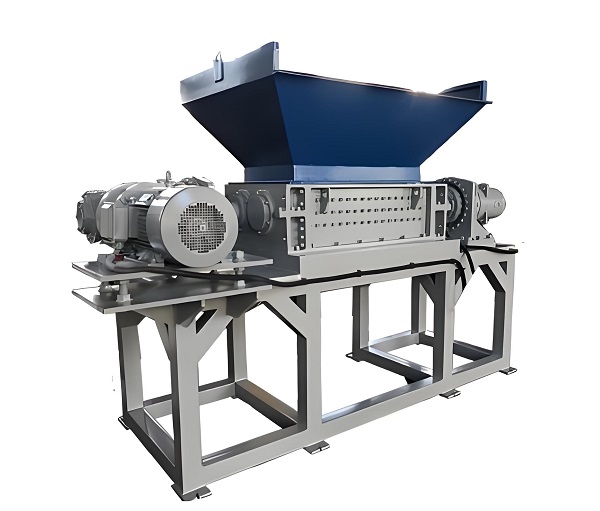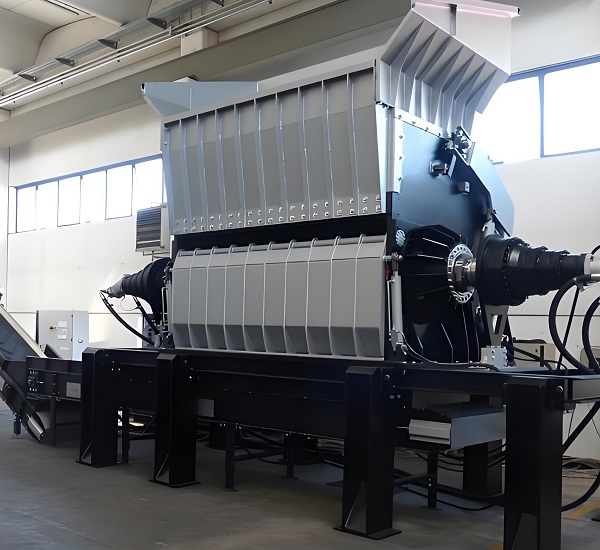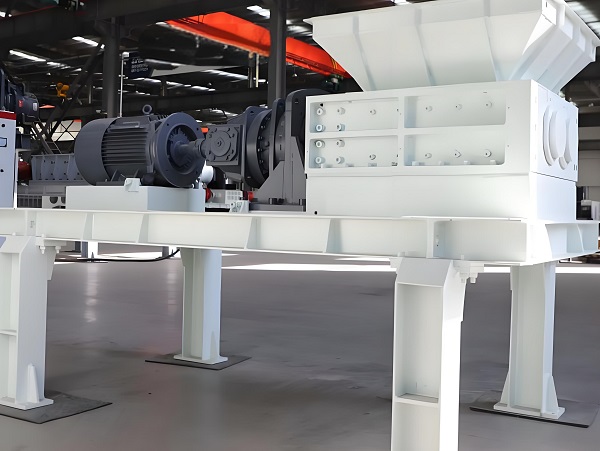Preface: Industrial waste shredders are widely used in various fields, such as waste recycling, scrap metal processing, construction waste processing, etc. By cutting industrial waste into smaller pieces, this equipment helps to improve the recycling rate, reduce waste treatment costs, while protecting the environment and reducing resource waste. As an efficient and environmentally friendly processing equipment, industrial waste shredders play an increasingly important role in modern production. Below, the editor of Zhongcheng Machinery will introduce the definition and working principle of industrial waste shredders:

Industrial Waste Shredder
1. What is an industrial waste shredder
Industrial waste shredder is a device specially used to cut and crush industrial waste into smaller pieces. It uses mechanical principles such as shearing, tearing and crushing to convert various difficult-to-handle industrial waste into materials that are easy to transport, store and reuse. Industrial waste shredders are recycling equipment used to pre-shred, crush, remove impurities, disassemble and encode industrial materials such as metal waste, scrap steel waste, and scrap iron waste. It can effectively process industrial waste into small pieces for subsequent recycling, reuse or treatment. This equipment not only improves the efficiency of industrial waste treatment, but also helps to reduce waste treatment costs, increase recycling rates, protect the environment and reduce resource waste.

Industrial Waste Shredder
2. Working principle of industrial waste shredder
The working principle of industrial waste shredder is mainly based on the mechanical principles of shearing, tearing and crushing. Specifically, its working process can be divided into the following steps:
a. Material entry: The industrial waste to be treated enters the equipment through the inlet of the shredder. The size and shape of the inlet will vary according to the type and size of the material being processed to ensure that the material can enter the shredding cavity smoothly.
b. Cutting and tearing: The shredder usually contains one or more sets of rotating cutting blades or gears. These blades or gears cooperate with each other to apply shear and tearing forces to the incoming materials. The shape, size and material of the blades are optimized according to the characteristics of the processed materials to ensure the best cutting effect.
c. Crushing and compression: During the cutting and tearing process, the material is broken into smaller fragments. These fragments may be further compressed and crushed to achieve the desired particle size and density.
d. Fragment discharge: The processed fragments are discharged through the outlet of the shredder. Depending on the type and purpose of the processed material, the fragments may be collected in a container or directly transported to other equipment for further processing.

Industrial Waste Shredder
Note: Some industrial waste shredders are also equipped with an automatic control system that can monitor the operating status and processing effect of the equipment. When encountering difficult-to-crush objects, the equipment will automatically reverse and reverse forward and backward multiple times to ensure that the material is completely crushed and discharged. In addition, the two rollers of the equipment have a mutual cleaning effect, which can force the discharge of materials to avoid the material from being entangled on the equipment.
PS: The industrial waste shredder is an efficient, energy-saving and environmentally friendly equipment. Its working principle is based on the mechanical principles of shearing, tearing and crushing. By optimizing the blade design and equipping with automatic control systems and other technical means, this equipment can achieve effective treatment of industrial waste and contribute to resource recycling and environmental protection.
Save Time! Get A Detailed Quotation Quickly.
